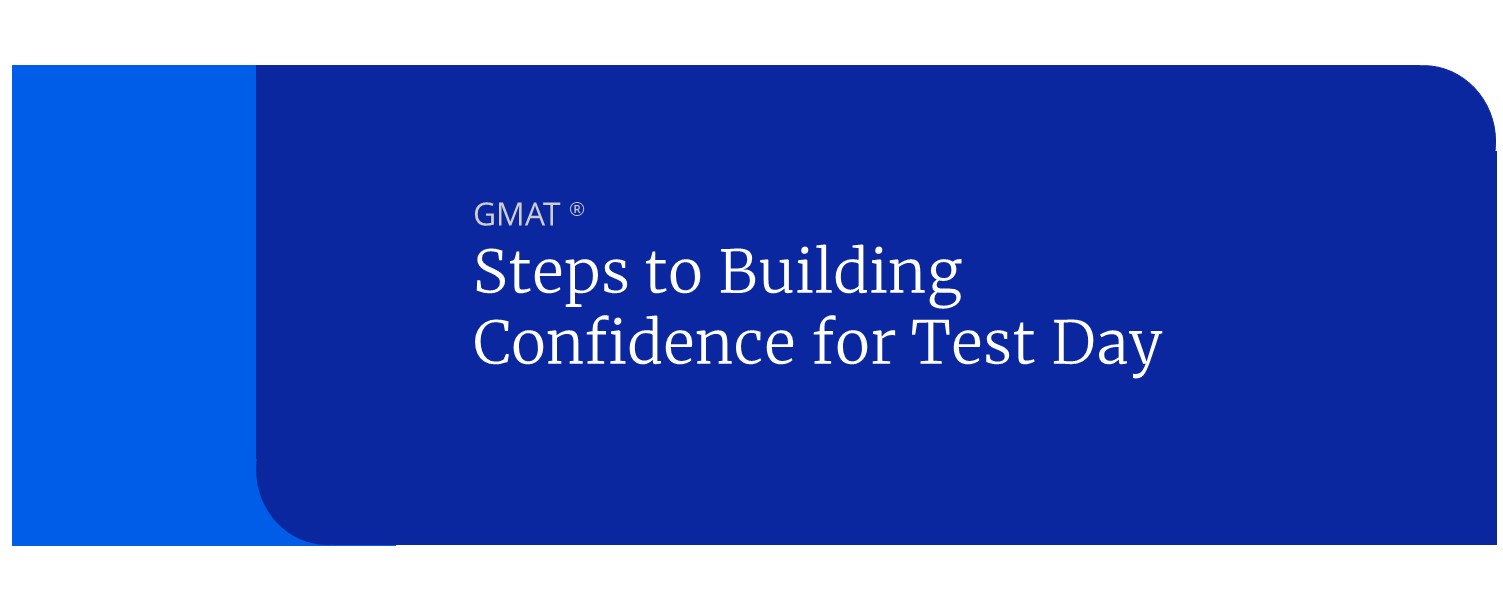How to Study for the GMAT in 3 months
Most people who are aiming for a competitive business school program study for between 3 and 6 months. By allowing yourself at least 3 months to prepare for the GMAT, you have an excellent opportunity to put in the time necessary to get your best possible score. Your biggest challenge may be maintaining your motivation and momentum over this period; an organized study plan will help you stay on track.
TABLE OF CONTENTS
- Taking Diagnostic Tests
- Picking a Study Schedule
- Developing a Study Plan
- Practicing Time Management
- Sample Study Plans
- Study Essentials
3 Month Study Guide Highlights
- Think about dividing your study time into two sections.
- Learn the main facts, concepts, question types, and strategies across all three sections of the GMAT (2 Months).
- Then, take mixed timed problem sets and practice tests and review them deeply to solidify your skills and lift your score (1 Month).
Step 1: Take a GMAT Diagnostic Test
Take a full-length, realistic GMAT practice test to find out what your Quantitative, Verbal, and Data Insights scores are now. Your practice test results will include not just your scores but also information about what types of problems you did well on and which ones gave you trouble. This information will help you design your study plan.
Another benefit of taking a GMAT practice test is that you will become familiar with the test’s format and timing. Your review of the individual questions will help you to know what you need to prioritize in order to improve. As you study, you will know exactly how you’ll use what you’re learning to ace test problems.
Taking GMAT practice tests under conditions as similar as possible to those you will experience on Test Day is important. For example, don’t take longer breaks than allowed (on the real test, you’ll get one 10-minute break), and don’t eat or drink except when on your break.
Finally, plan to spend at least 3 hours reviewing your test in depth within 2 days of taking it. There’s a lot of great data to help you in your studies; take the time to analyze it.
Step 2: Set Your Study Schedule
When Test Day is 3 months away, there is a danger of procrastinating. It can be hard to get into a GMAT study routine, especially if you’ve been out of school for a while. And 3 months feels like a long time! However, the days and weeks will slip by faster than seems possible, and before you know it, the test will be a week or two away. Don’t let Test Day take you by surprise.
Take a look at your overall schedule for the next three months. Are there going to be certain busy periods at work? Will you have other school, family, or personal commitments in that timeframe? Plan your overall schedule accordingly.
Studying most days of the week will improve your score far more than trying to cram all of your study into one or two days a week. Your brain can learn only so many new things each day. Plan to study 5 or 6 days a week, for between 30 minutes and 3 hours a day (depending on the day). Do give yourself 1 or 2 GMAT-free days every week; your brain needs a break.
Also, consider using a GMAT mobile app to give you flexibility and convenience to improve in short increments of 5 to 15 minutes throughout the day.
[GMAT CONTENT APPS: Apple App Store or Google Play]
Block out time to take more full-length practice tests over the course of your studies. Plan to take your second practice test at the end of your 4th week, your third one at the end of the 8th week, and then two more at the 10- and 11-week marks. You will take your last practice test 1 week before Test Day. Take practice tests to measure your progress, become more familiar with the test’s timing and format, and build your mental endurance. After each test, invest at least 3 hours in reviewing the test data and individual problems.
Schedule your study time and practice tests on your calendar and then keep those appointments with yourself. In the same way you show up for class or work on time, you are going to “show up” for GMAT studying on time.
Step 3: Develop Your Study Plan
How should you study? An effective approach is to first use a resource such as a GMAT book or GMAT course to learn some strategies or content and then follow up by practicing what you just learned with test-like problems. Applying what you learn right away to the types of problems you’ll see on Test Day will help you solidify your knowledge so it sticks with you.
What should you study? That depends on the results of your practice test. For your first month, focus on material that is
- a “weakness opportunity” for you
- most often tested
A “weakness opportunity” is something that you’re struggling with right now, but you also think you have the opportunity to improve. Maybe you know how to do it but you’re slower than needed. Or maybe you did well on this topic in school, but you need to practice to get your skills back. Don’t focus on your “worst” weaknesses—go after the lower-hanging fruit first.
In the Quant section, for example, linear equations and exponents are more frequently tested than quadratic equations. In addition, you have to learn how to handle the first two before you can effectively do the third. So start with linear equations and exponents; worry about quadratics later.
Statistics topics are very common on the GMAT. Average and median are far more commonly tested than standard deviation, so again, start with the material that is more commonly tested.
During the last week before your second practice test, add in some general review of strengths that you may not have practiced much in the past few weeks. For example, if you’re great at Critical Reasoning (and therefore haven’t been prioritizing it in your studies), do some CR problems this week to solidify your approach before your practice test.
FREE PREMIUM CONTENT
GMAT Math Quicksheet
Unlock access to our free GMAT Math Quicksheet.
Two Sample GMAT Study Plans
One study plan for Casey, who self-studies, and one study plan for Ayo, who takes a class and is aiming for a very high score.
| Future MBA | Casey | ayo |
|---|---|---|
| Goals | Target score: 615. Plans to earn an MBA while working full-time as a product manager. | Target score: 665 (a very high score). Will take leave from an engineering job to earn an MBA from a school with a top national ranking. |
| Diagnostic Score | 545 | 615 |
| Week 1 | Practice test + review (6 hours) Study 3 days × 1.5 hr/day (4.5 hours) | Practice test + review (6 hours) Class 1 day × 3 hr (3 hours) Study 4 days × 1.5 hr/day (6 hours) |
| Week 2 | Study 3 days × 1.5 hr/day (4.5 hours) Study 2 days × 1 hr/day (2 hours) | Class 1 day × 3 hr (3 hours) Study 5 days × 1.5 hr/day (7.5 hours) |
| Week 3 | Study 3 days × 1.5 hr/day (4.5 hours) Study 2 days × 1 hr/day (2 hours) | Class 1 day × 3 hr (3 hours) Study 5 days × 1.5 hr/day (7.5 hours) |
| Week 4 | Study 4 days × 1.5 hr/day (6 hours) Practice test + review (6 hours) | Traveling for work Class 1 day × 3 hr (3 hours) Study 3 days × 1.5 hr/day (4.5 hours) |
| Week 5 | Study 3 days × 1.5 hr/day (4.5 hours) Study 2 days × 1 hr/day (2 hours) | Class 1 day × 3 hr (3 hours) Study 5 days × 1.5 hr/day (7.5 hours) |
| Week 6 | Traveling for work Study 3 days × 1 hr/day (3 hours) | Practice test + review (6 hours) Class 1 day × 3 hr (3 hours) Study 4 days × 1.5 hr/day (6 hours) |
| Week 7 | Study 3 days × 1.5 hr/day (4.5 hours) Study 2 days × 1 hr/day (2 hours) | Class 1 day × 3 hr (3 hours) Study 5 days × 1.5 hr/day (7.5 hours) |
| Week 8 | Study 4 days × 1.5 hr/day (6 hours) Practice test + review (6 hours) | Class 1 day × 3 hr (3 hours) Study 5 days × 1.5 hr/day (7.5 hours) |
| Week 9 | Study 3 days × 1.5 hr/day (4.5 hours) Study 2 days × 1 hr/day (2 hours) | Practice test + review (6 hours) Class 1 day × 3 hr (3 hours) Study 4 days × 1.5 hr/day (6 hours) |
| Week 10 | Study 4 days × 1.5 hr/day (6 hours) Practice test + review (6 hours) | Big project due at work Study 3 days × 1.5 hr/day (4.5 hours) |
| Week 11 | Study 4 days × 1.5 hr/day (6 hours) Practice test + review (6 hours) | Practice test + review (6 hours) Study 5 days × 1.5 hr/day (7.5 hours) |
| Week 12 | Study 3 days × 1.5 hr/day (4.5 hours) Study 2 days × 1 hr/day (2 hours) | Practice test + review (6 hours) Study 5 days × 1.5 hr/day (7.5 hours) |
| Day Before the Test | Nothing | Nothing |
| Total Prep Hours | 100.5 | 136.5 |
Step 4: Practice Time Management
The GMAT is scored differently than a traditional exam, so time management is an important strategy to develop on the GMAT. The exam is not based on the number of problems you get right, but rather on the difficulty of the problems that you get right vs. wrong. If you spend too much time on the hardest ones, trying to get them right, you’ll have to rush on easier ones—and making careless mistakes on easier problems will cost you far more than the gain you can earn by getting hard problems right.
If you are planning on taking the GMAT in a testing center, you can develop special note-taking techniques using a GMAT test simulation booklet. This preparation tool can help you become comfortable with the laminated scratch paper that you’ll use on an Official GMAT administered in a testing center.
If you are planning on taking the GMAT Online exam, you can use both a digital and a physical whiteboard for your scratch work. Having a plan for when to use each type can help you optimize your question times.
[ NEXT: GMAT Time Management ]
GMAT Study Essentials
Below are resources to help you prepare for the GMAT and reach your target GMAT score.
*Higher Score Guarantee: Conditions and restrictions apply; for complete guarantee eligibility requirements, visit kaptest.com/hsg.





